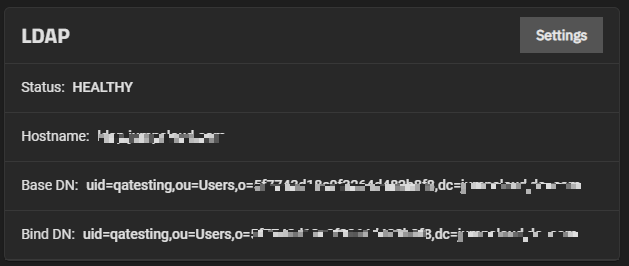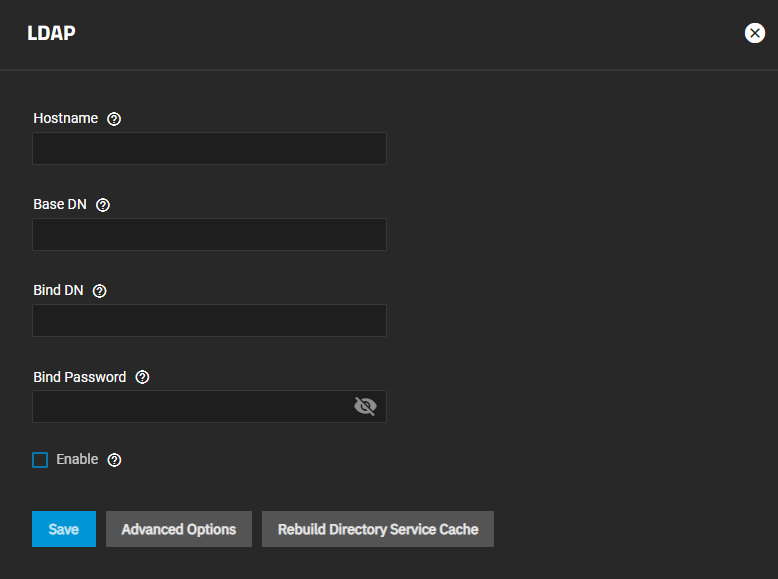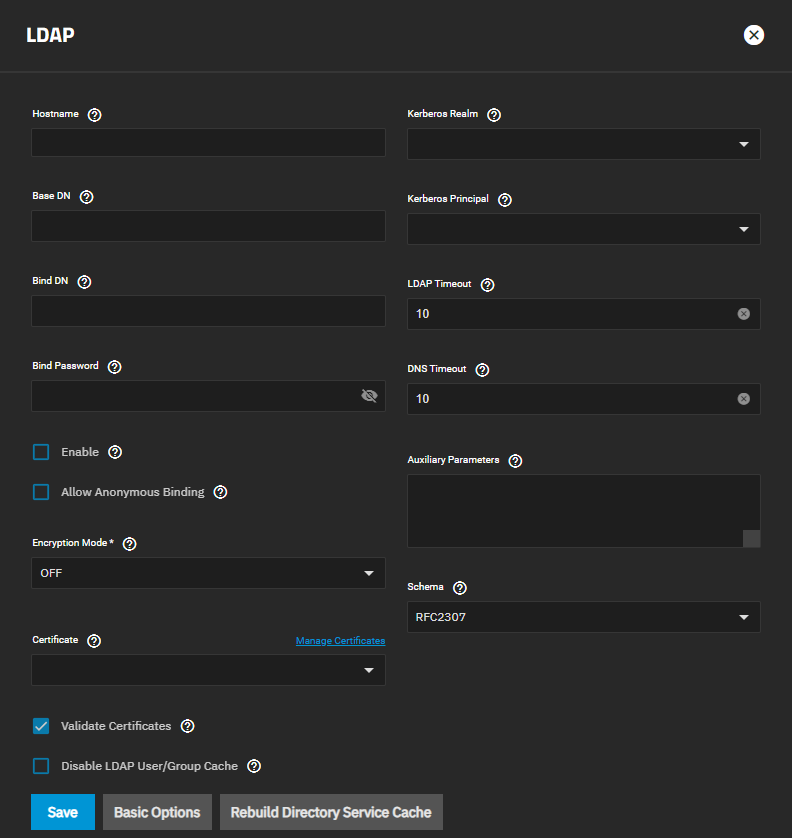LDAP Screens
3 minute read.
Support for LDAP Samba Schema is deprecated in TrueNAS 22.02 (Angelfish) and removed in 24.10 (Electric Eel). Migrate legacy Samba domains to Active Directory before upgrading to 24.10 or later.
The LDAP widget displays after you configure TrueNAS settings for your LDAP instance. The widget includes Status, and the Hostname and Base DN and Bind DN you configured.

Settings opens the LDAP screen.
The LDAP configuration screen has two screens, Basic Options the default view, and Advanced Options. After configuring LDAP, the edit LDAP screen includes both the basic and advanced options.
Rebuild Directory Service Cache resyncs the cache if it gets out of sync or there are fewer users than expected are available in the permissions editors.
The settings on the Basic Options also display on the Advanced Options screen.
The settings on the Advanced Options screen include the Basic Options screen.





